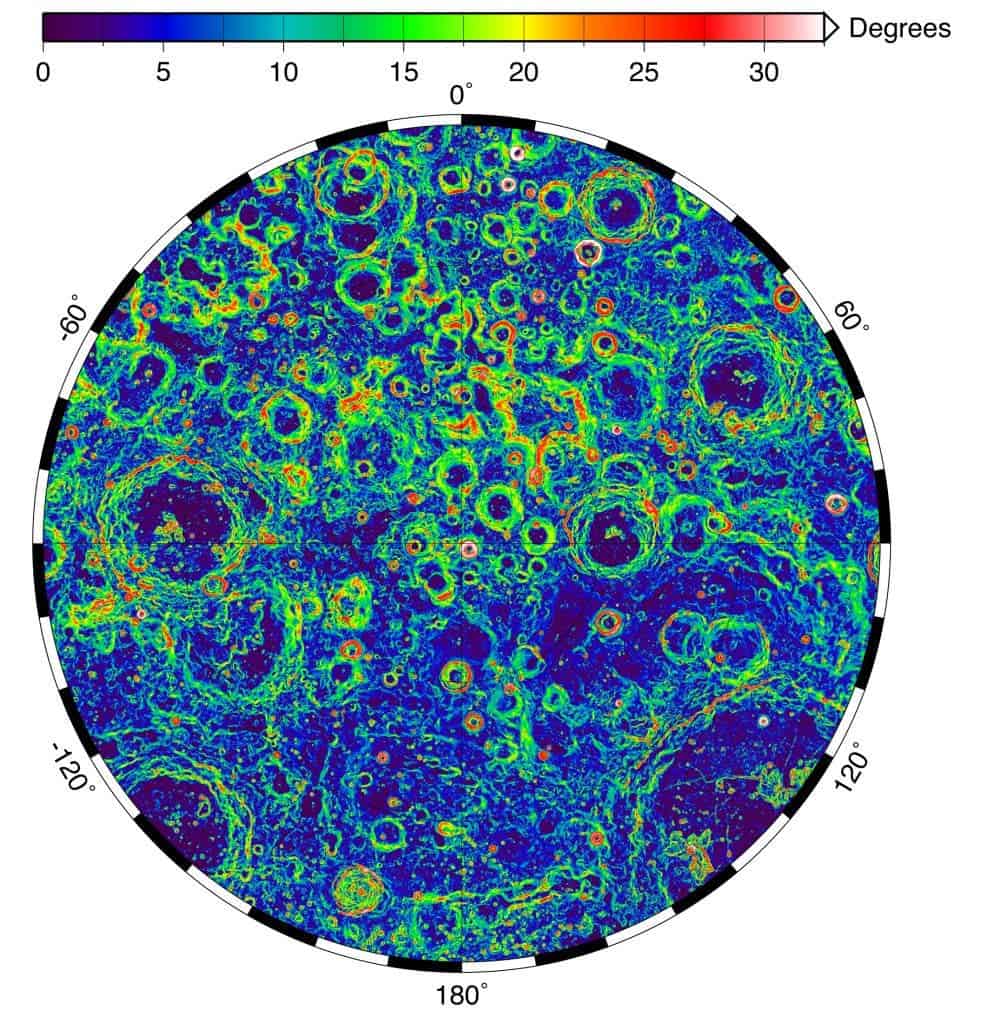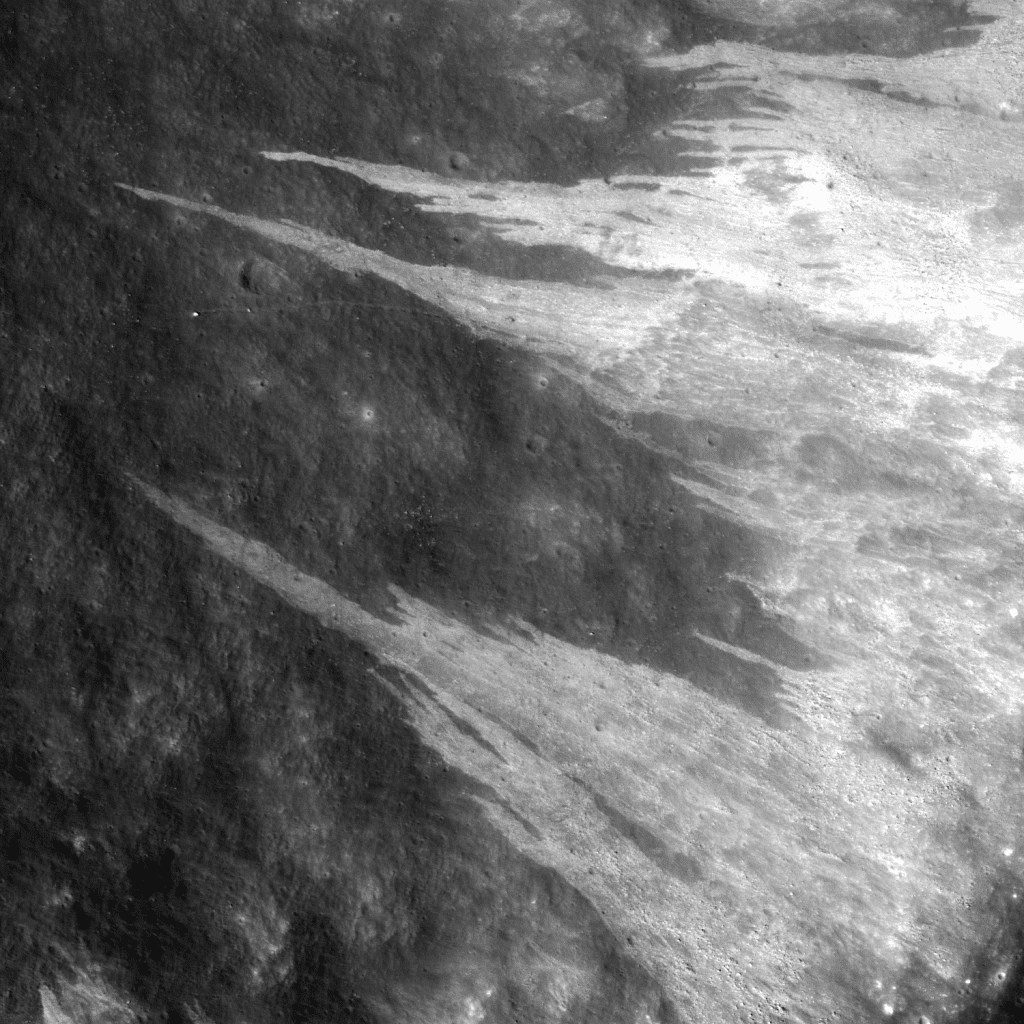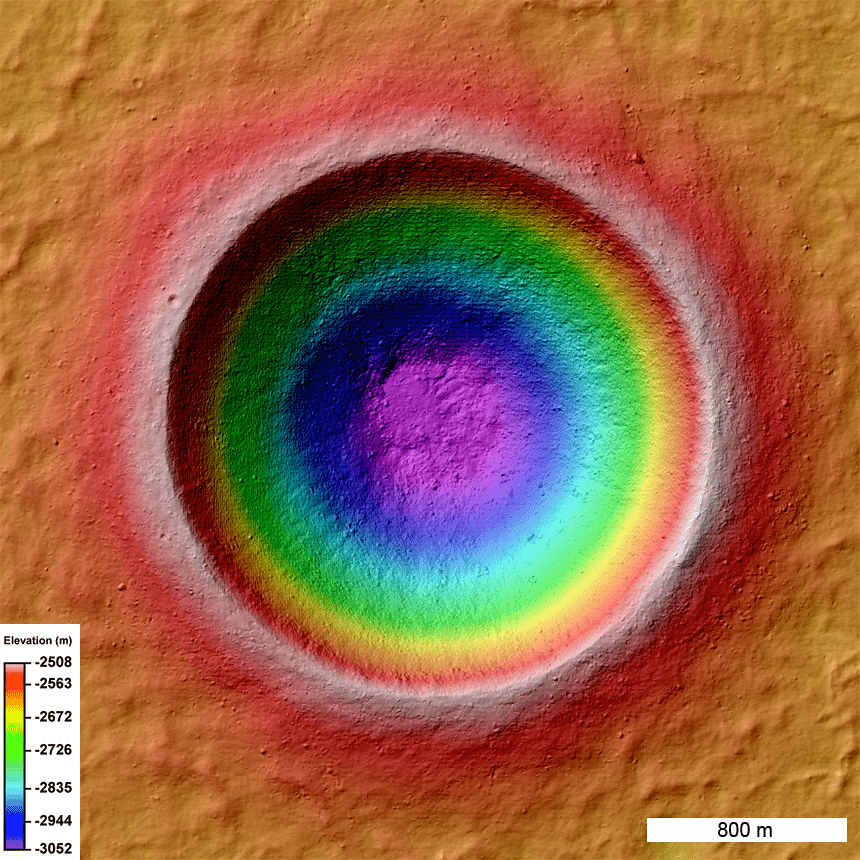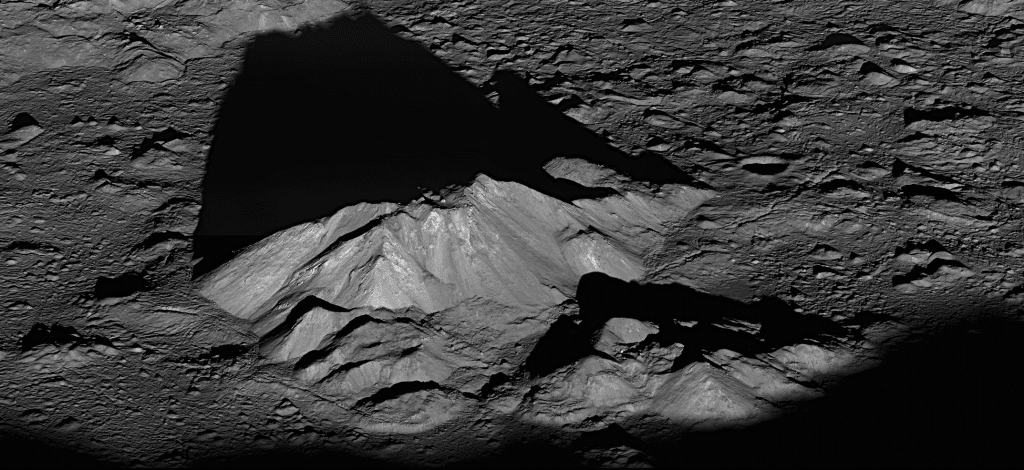NASA wants the public (read – YOU) to pick the best moon image ever taken by the reconnaisance orbiter. They have settled the finals between 5 different pictures, and you get to vote which one wins. The winner will be the cover of a special image collection.
The Lunar Reconnaissance Orbiter (LRO) is a NASA robotic spacecraft currently orbiting the Moon in a low 50 km (31 mi) orbit. Launched on June 18, 2009, the LRO has taken some amazing pictures in the past few years, so choosing between them is no easy feat.
Link for the voting poll.
The 5 finals in the picture are:

Starry Night: This image shows the slopes found near the south pole of the Moon, poleward of 75 degrees South. The bright red to white areas have the highest slopes (25 degrees or more) while the dark blue to purple areas have the lowest slopes (5 degrees or less). The steepest slopes are found in impact crater rims, which appear as brightly colored circular features throughout the image.

Clerke Crater: The interior wall of the Clerke crater has many distinct flows of granular material which narrow as they reach towards the floor of the crater. The source material originates from the crater rim. The debris appear higher in reflectance compared to the rest of the crater wall, likely due to differences in maturity and perhaps grain size of the material. The debris flows may be younger than the crater floor and walls if the flow was instigated by seismic shaking or a nearby impact crater.

Diviner North Pole: This image features night time temperatures at the Moon’s north pole as measured by the Diviner instrument. Areas in blue and purple represent colder temperatures, while areas in orange and red represent warmer temperatures. At any given point in the Moon’s orbit, half of the Moon is in daylight, while half of the Moon is in darkness. At the poles, we would see that half of the image would be much hotter than the other. This image was created by using the temperatures as measured at midnight at any given point on the surface. What becomes immediately obvious is the role that elevation plays on surface temperature. Sunward-facing slopes of crater walls appear hotter, while poleward-facing slopes (and in some cases of deep craters) appear much colder

Linné Topography: Linné (2.2 km diameter) is a very young and beautifully preserved impact crater. LROC stereo images provide scientists with the third dimension – information critical for unraveling the physics involved in impact events. The LROC science team presented a first analysis of Linné crater topology at the Lunar and Planetary Science Conference last week.

Tycho Central Peak: Tycho’s features are so steep and sharp because the crater is young by lunar standards, only about 110 million years old. Over time, micrometeorites, and not so micro meteorites, will grind and erode these steep slopes into smooth mountains. For a preview of what Tycho’s central peak may look like in a few billion years, visit Bhabha crater.









